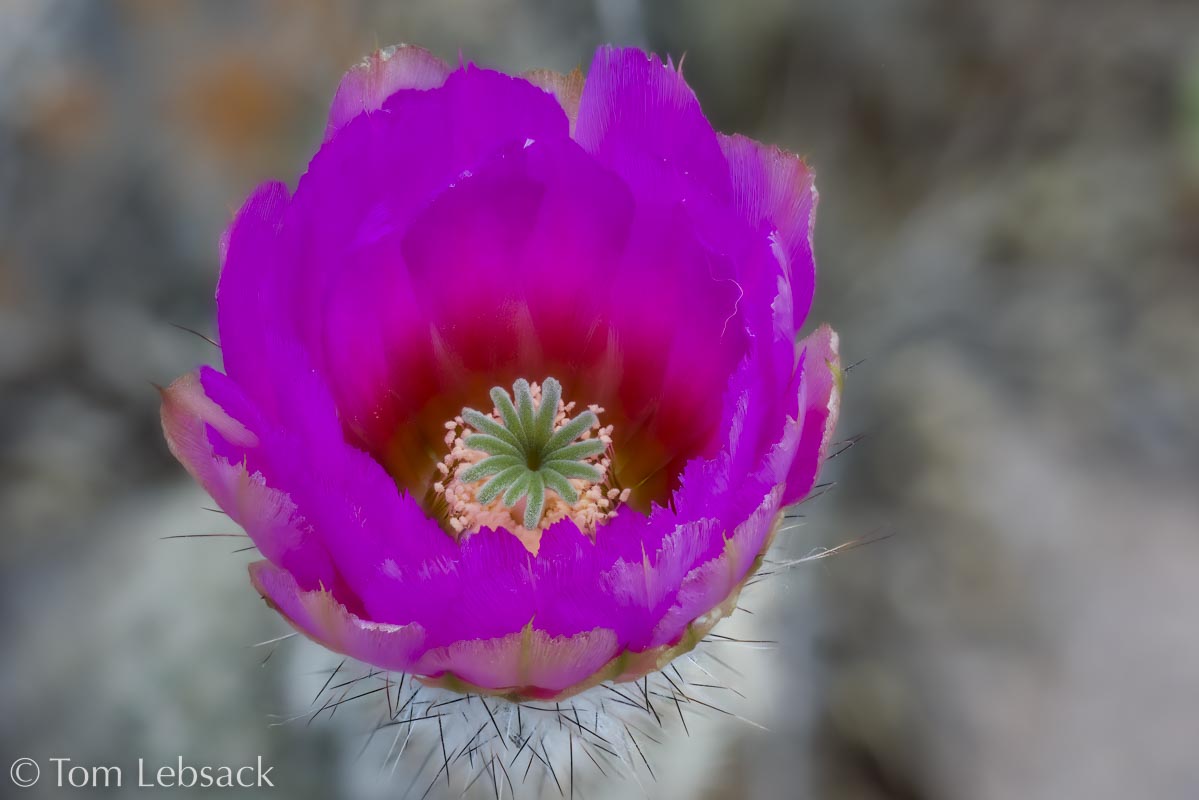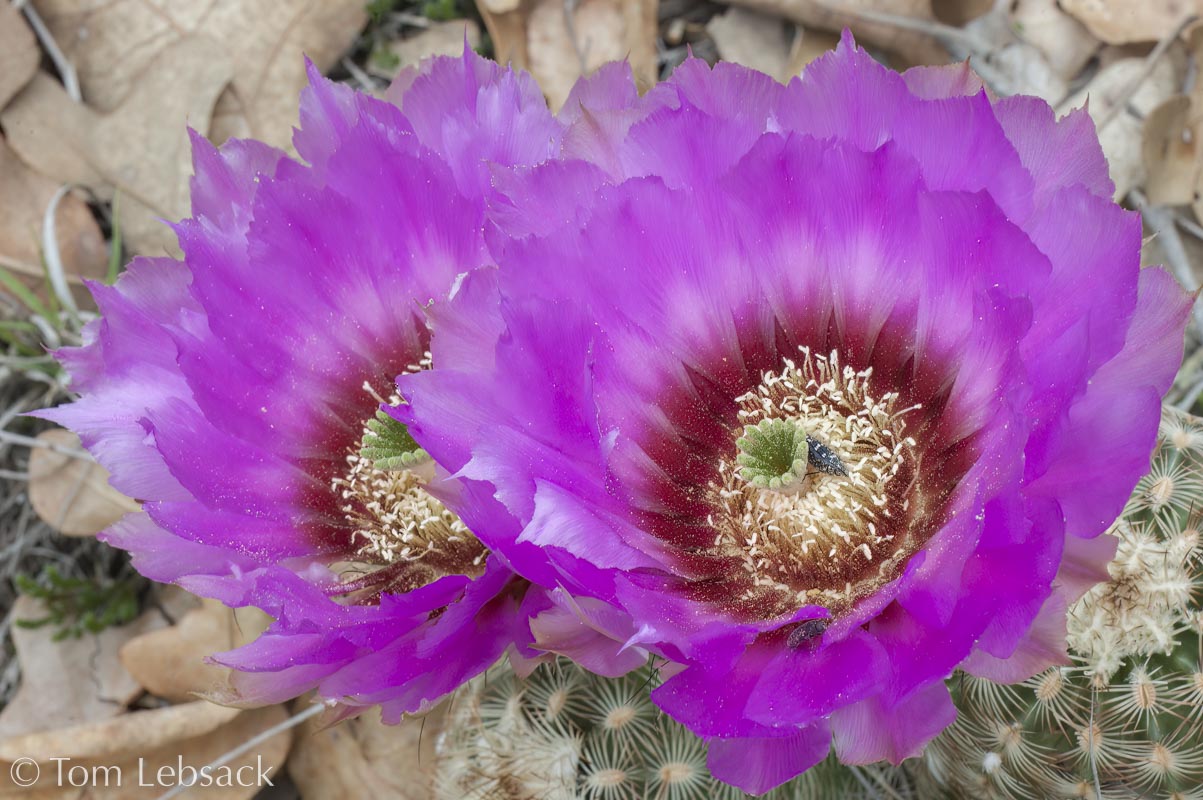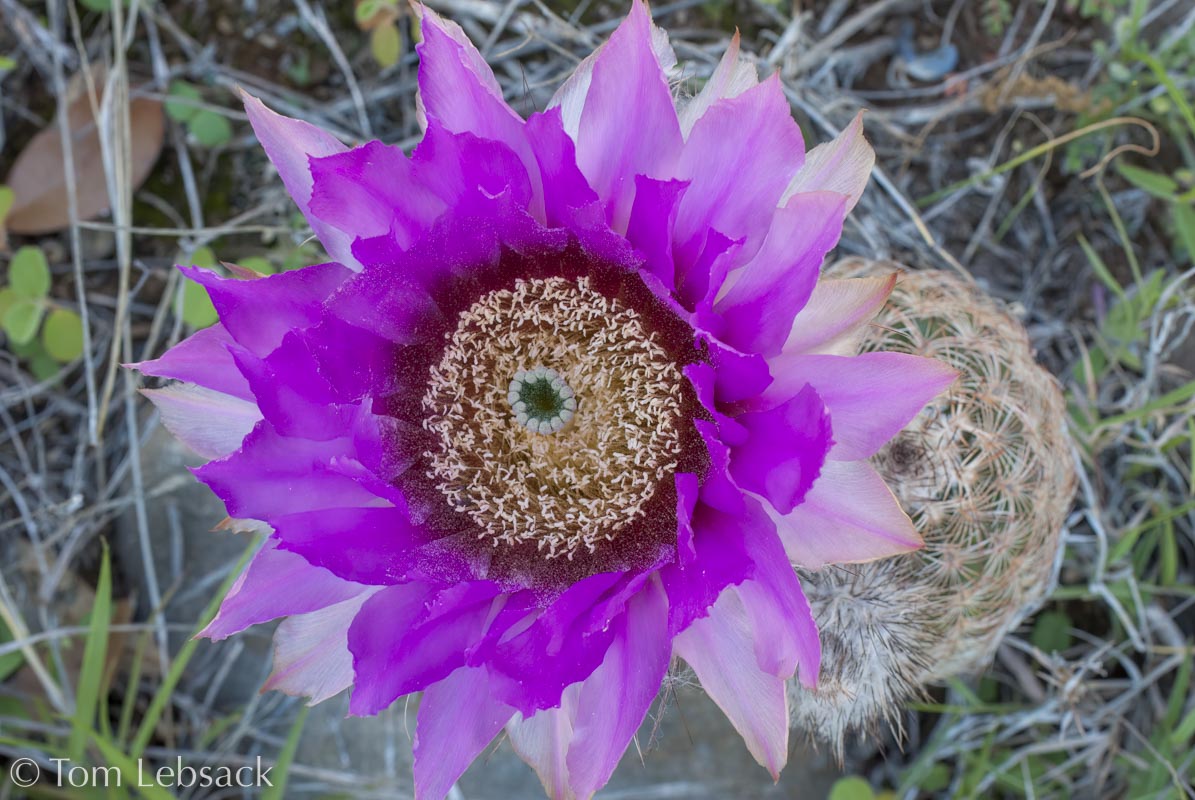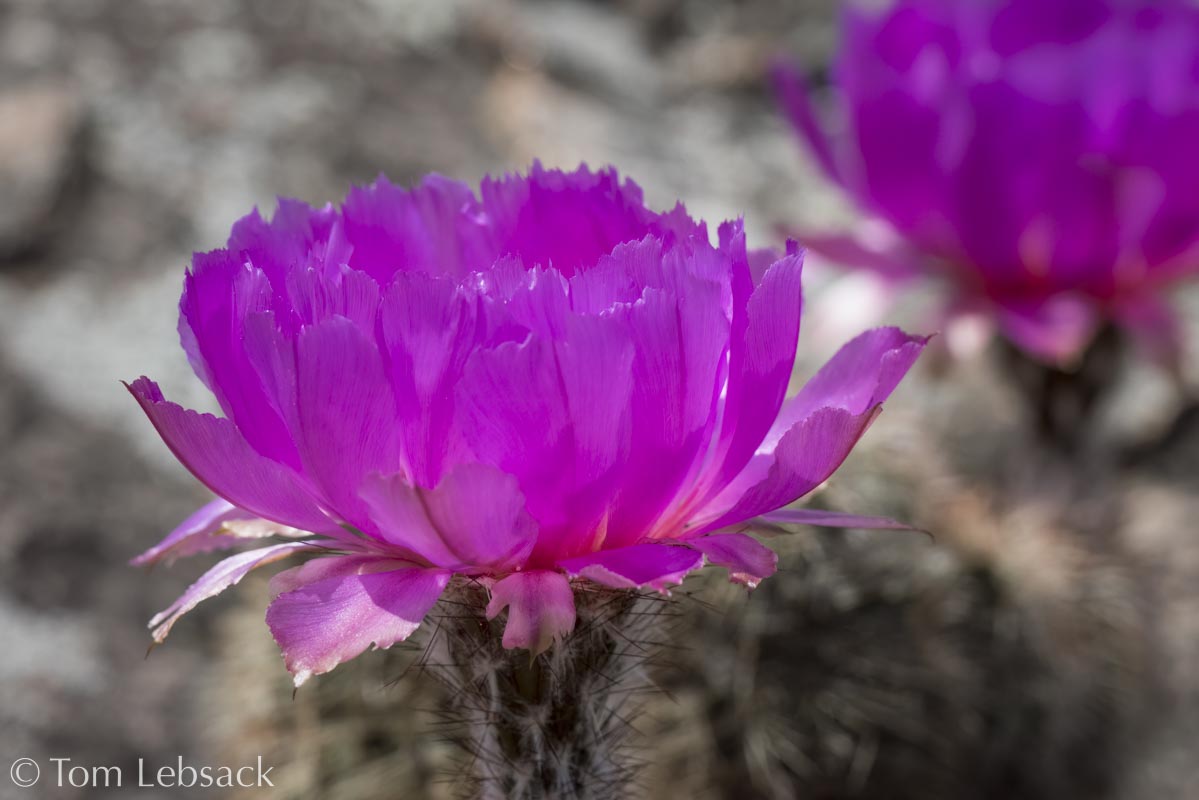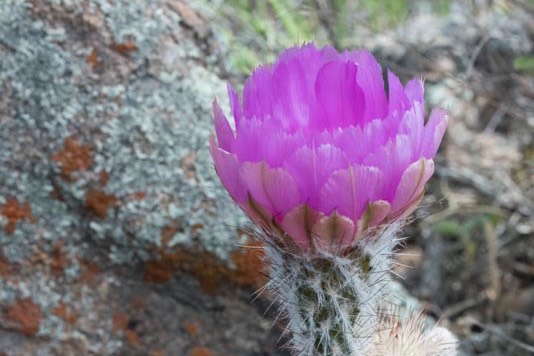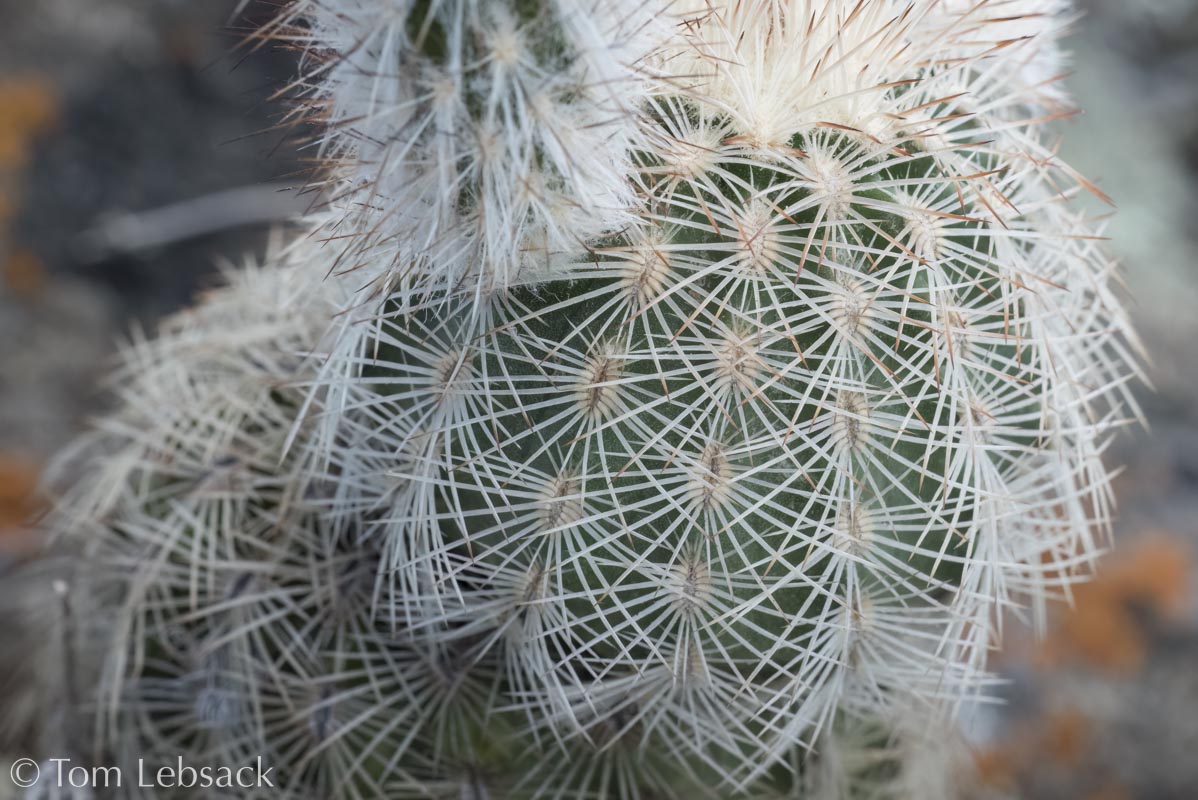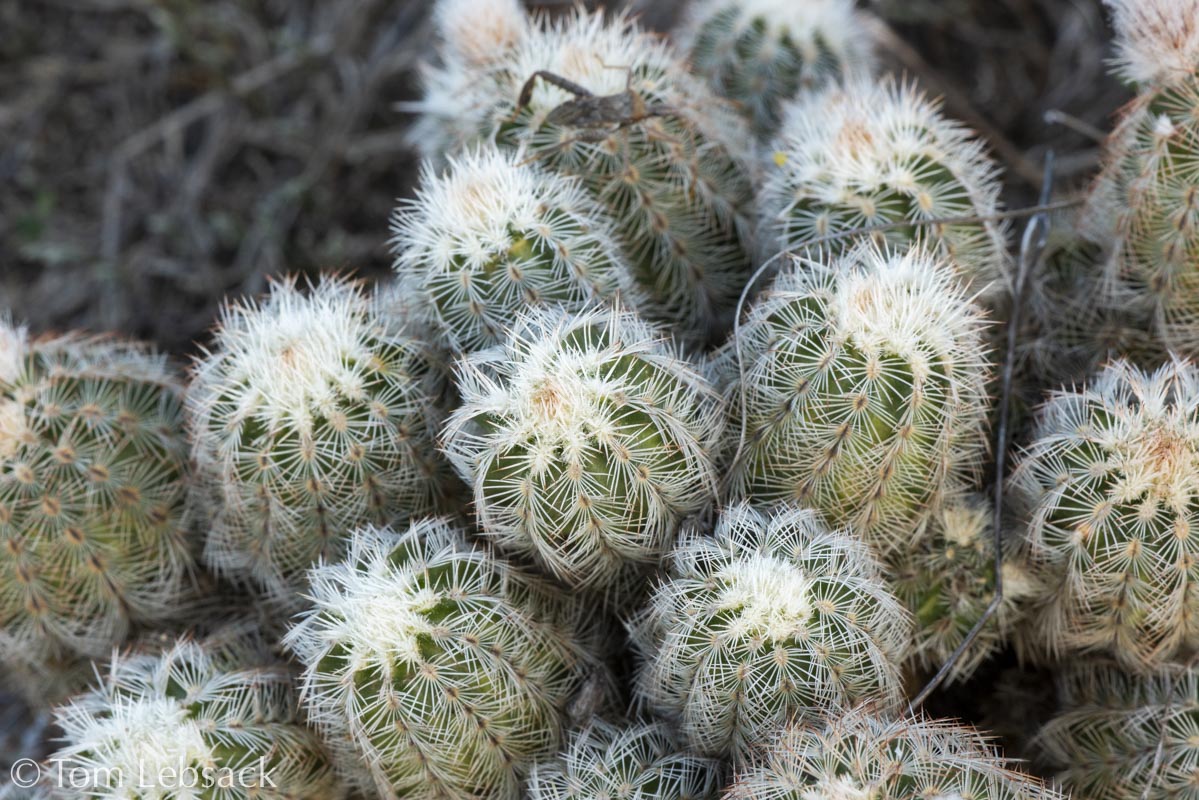Texas Wildbuds
Echinocereus reichenbachii
(Lace Cactus)
| Scientific Name | Echinocereus reichenbachii (Echinocereus reichenbachii ssp. caespitosus | USDA PLANTS Symbol | ECRE |
| Common Name | Lace Cactus | ITIS Taxonomic Serial No. | 19814 |
| Family | Cactaceae (Cactus) | SEINet Reference |
Click Here |
| Description | Habitat: Dry environments; rocky limestone and sandy soils in desert scrub, grasslands and oak-juniper woodlands on mountains, mesas, woodlands and alluvial soils of grasslands; throughout Texas and elsewhere, up to 4000 ft. Plant: Three to 12 simple or branching dark green cylindrical stems 3 to 4 inches tall and 1-1/4 to 2-1/2 inches across. Pads & Spines: Stems with 3 to 15 narrow ribs; small elliptic-oval areoles; long, white, woolly hairs near the stem tips; 0 to 2 very short central spines per areole; 15 to 21 radial spines usually about 1/2-inch long or less, but up to 1 inch long, laying flat and arranged comb-like around the perimeter of the areoles; white to tan, dull pink, dark brown, or purplish black. Inflorescence: Funnel-shaped flowers 2 to 3 inches long and 2 to 2-3/8 inches wide, with thin, delicate silvery pink to magenta tepals; yellow anthers and 8 to 20 green stigma lobes. Bloom Period: April to June. Fruit: Green, round to obovoid, 5/8 to 1 inch long; woolly and spiney. References: "Cacti of Texas" by Powell, Weedin and Powell, "Manual of the Vascular Plants of Texas" by Correll and Johnston, SEINet and Echinocereus Status Liste by Wolfgang Blum. Note: Wolfgang Blum has pointed out that these plants are ssp. caespitosus; however the literature has not included this subspecies at this time. |
BONAP Distribution Map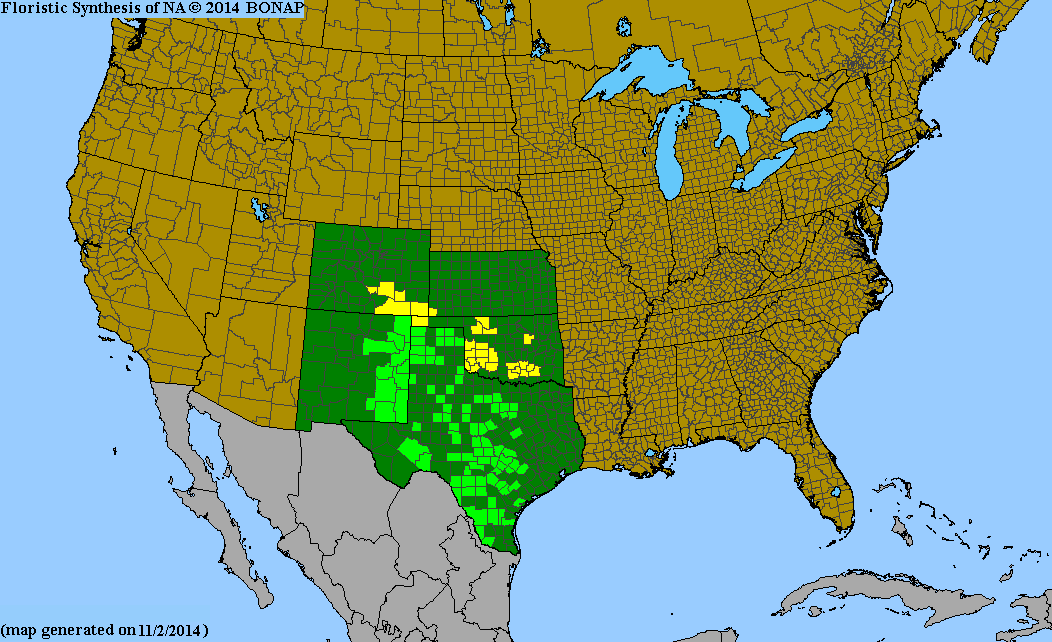 Map Color Key Map Color Key |
Texas Status: Native |
Banner photo of Castilleja indivisa and Lupinus ssp. taken along FM 1323 north of Johnson City, Blanco County
© Tom Lebsack 2025
Every attempt is made to provide accurate, up-to-date, and relevant information, but the completeness or accuracy of any information presented on this website cannot be guaranteed. I use authoritative references to insure high standards of accuracy and review and update the information frequently.
